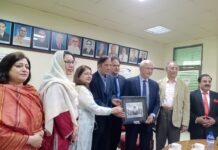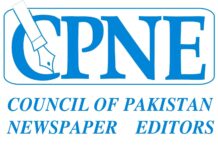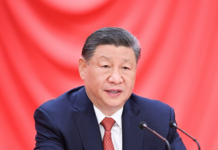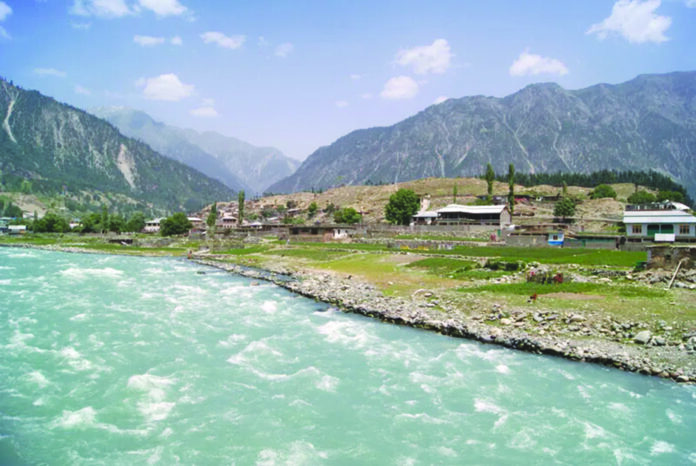Across the world river economy is seen as one of the major sources in the socioeconomic development of the local communities living alongside rivers. These communities are often indigenous communities living since time immemorial by the banks of the rivers and have grassroot cultural, and spiritual affinity with the river. They rely for their economic sustenance on the river as rivers play a powerhouse part in the agricultural, tourism and other industries in the local economy. From rice paddies in Asia to vineyard alongside the Rhine River in Europe, the rivers have been feeding local populations and playing a key role in the economies of the local regions. The River Swat is one among such a vast network of rivers that is playing a key role in the local economy.
Swat is derived from Suvastu mentioned in the Hindu holy scripture Rigveda and means transparent waters. Therefore, the whole valley is called Swat due to the river. This river originates from glaciers in the lap of the Hindukush and is mainly formed at the junction of Ushu and Gabral rivers in Kalam. There are many other tributaries to it including Shetangot, Mankiyal, and Pushmal. Historically, Swat was center of Gandhara civilization and that’s why in ancient times there were cabins across the river’s banks for prayers and meditation purposes. Even people who lived at these places used river Swat water for drinking. Lands adjacent to rivers are fertile due to the abundance of waters for irrigation and have manifold productivity. River Swat too irrigates almost 160,000 acres of agricultural land and finally falls at Attock Khurd in the Kabul River. There are lands between Mankiyal and Kalam and on the upper side in Gabral and Kalam as well that have been irrigated by this river for centuries.
Local economy of Swat maybe diverse however in upper regions especially tehsil Bahrain where most of the population is living by the banks of the river has mainly river-based economy. There are hotels, markets, restaurants and tourist points for visitors. The volume of fisheries is quite extensive at different points alongside river Swat which immensely contribute to the local economy. The valley is especially famous for Trout and Sahu fishes. Fisheries have also been made in local restaurants and hotels as freshwater fishes attract tourists.
Additionally. hospitality industry is one of the major sources of income in Swat. There are hundreds of hotels and restaurants at river points. Tourist points, river front resorts and other recreational points including parks and natural springs significantly contribute
to the local economy and generate numerous job and livelihood opportunities for locals. As a case study I took two hotels: Kuwait Continental and Madina in Bahrain. Both have completed one year of their inauguration. Madina hotel is on the back side of the road whereas Kuwait continental’s front is exposed to the river Swat. Speaking to the owners the quantitative data of earnings revealed was far better than the Madina hotel. The owners attributed this difference to the river-view as most tourists mostly stay in the river front hotels.
Moreover, rivers provide recreational activities such as fishing, boating, sightseeing, swimming, and kayaking, promoting outdoor recreational industries. River based activities and recreation do not only have direct spending but indirect spending in retail, entertainment and transportation which is why river-based economy plays far better part in the development and sustenance of local communities. In the upper regions of Swat there are hundreds of handicrafts, dry fruits, and antiques shops especially opened for tourists and is a major source of livelihood.
Environmentally, in the hot summer the valley’s weather is quite moderate. This river is supporting a wide range of flora and fauna. The river has great importance in the folklore, poetry and local culture of the communities living by the bank of the river.
Given such a significant backbone of the local economy river Swat should have been protected from contamination, over construction and hydropower projects designed to convert the river into the tunnels. However, that has not been materialized but in recent years many hotels and other commercial buildings have been constructed over the banks of the river Swat, shrinking the riverbed as well as endangering lives as flash floods have always swept these hotels and markets. Local administration and government representatives have failed in formulating policies and taking measures aimed at protecting the river. Local administration is also non serious regarding the contamination of the river as most of the sewerage pipes and other garbage are dropped in the river regularly. This not only contaminates the waters and environment but also endangers the aquatic life.
Furthermore, the Pedo designed hydropower projects poses an existential threat to the river as they are supposed to turn the waters of the river into tunnels at multiple places between Bahrain and Gabral. The lack of proper pre-assessment of the area of influence makes the hydropower project a disaster for the locality and the river. This river is providing livelihood opportunities to the local populations however the government is dread set to destroy the river in this already marginalized and downtrodden region. There can be many alternatives for the production of electricity including solar, wind and dams but turning a river into tunnels which was there for
thousands of years is so irrational. The government must be prudent in the construction of hydro power projects, electricity at the cost of ruining local communities is insane.























